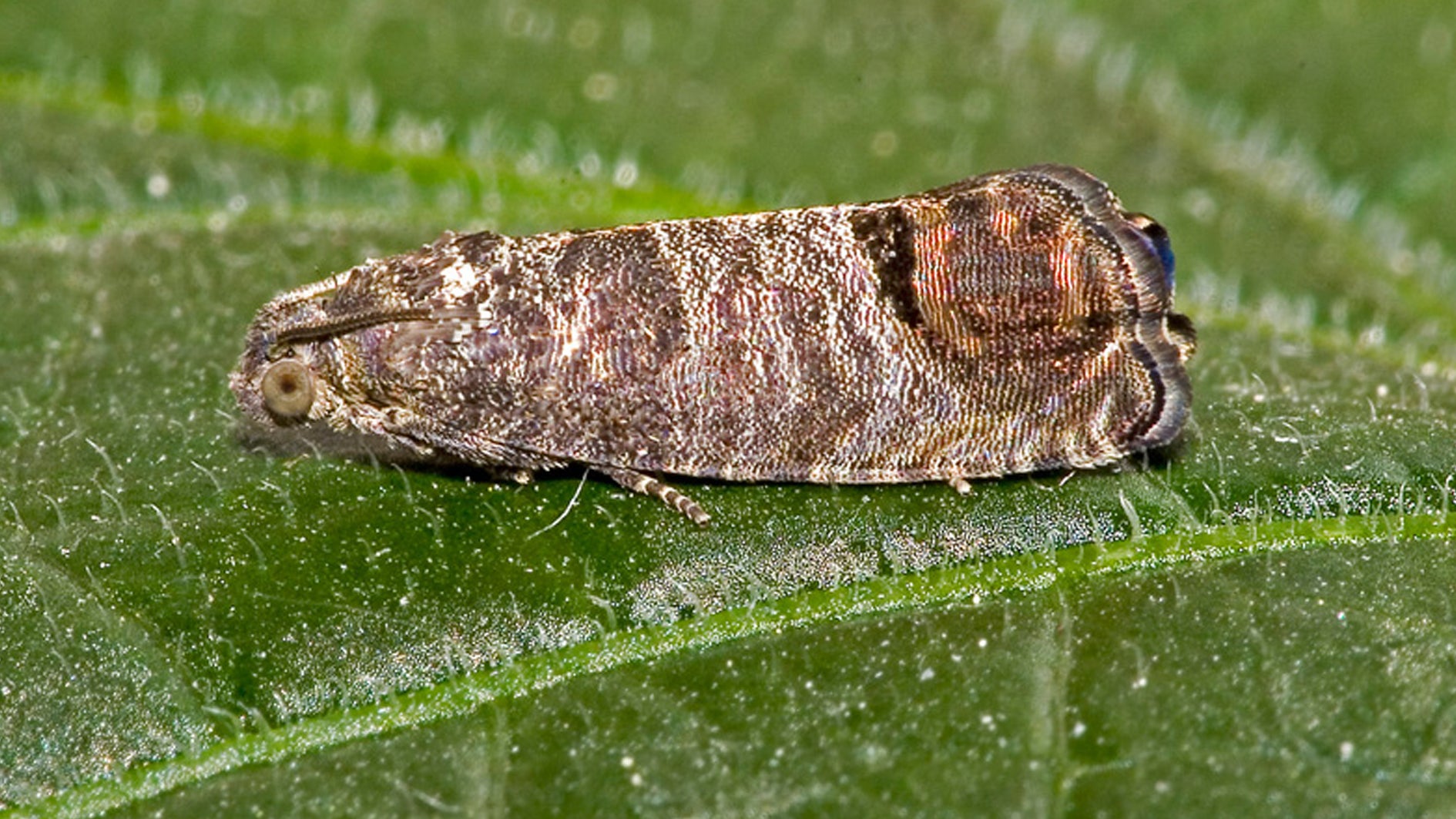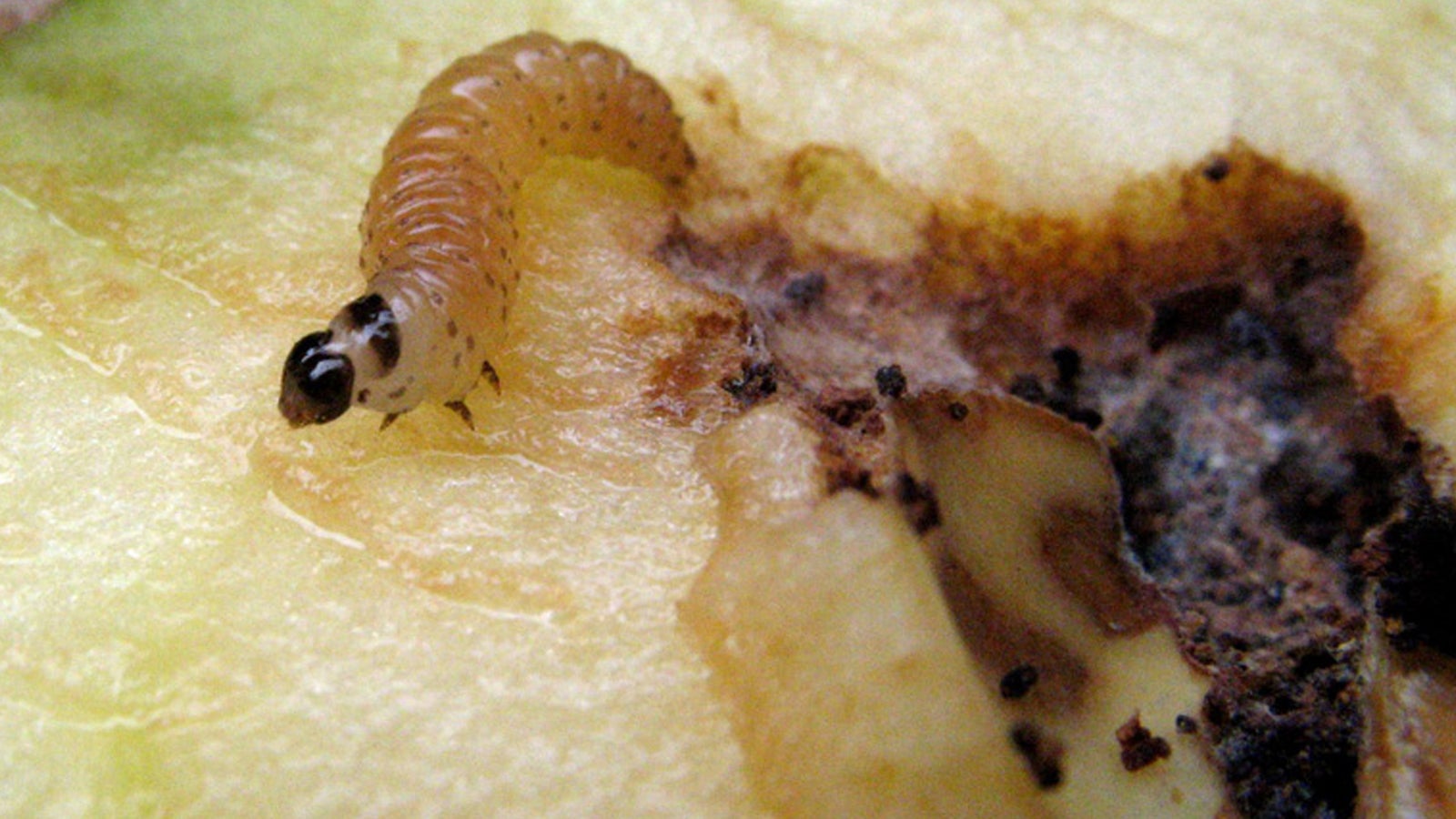
Codling Moth
08 Dec, 2020
Upon hatching the larvae burrow into fruit and feed on the flesh and pips for approximately 3 weeks, before leaving the fruit to pupate, or overwinter in the ground.
The adult moths are 1-2 cm long, and often hard to spot as their mottled wings blend in well with tree bark. The larvae overwinter within silken cocoons in the soil, in leaf litter around the base of trees, or under loose scales of bark.
In Auckland, the moths appear from September through till February, during this period the moths mate. After mating females can lay between 30-70 tiny disc shaped eggs on the fruit, nuts, leaves and fruiting spurs.
Prevention
Preventing the issue is always better than trying to cure it. As the Caterpillars pupate over winter and like to hide in various nooks and crannies, under bark, leaves, weeds and in infected fruit that are around trees, it is best to keep the area free of suitable places to pupate.
Give the trunk and branches a scrub (not too hard though) with a stiff brush to remove any loose bark that they may be hiding in.
Natural Treatment
Spraying through spring with BioNeem may also help to smother eggs.
One remedy is to wrap the tree trunk in corrugated cardboard. The theory is that the caterpillar will find it an attractive hiding place and spin their cocoon in there. You can then remove and burn it before they hatch in spring.
To be most effective, place the cardboard as high up the trunk as possible (but below any fruit), grease or make a sticky band below the cardboard to stop them passing on by, and remove and burn frequently from early summer to after harvest.
Other Treatment
When the trees bloom in spring, the adults will start to mate and lay eggs. This is the time to place a Codling Moth Trap in your trees. The trap uses a synthetic replica of the scent of the female to attract and trap the male moth, which reduces the chance of breeding and, therefore, fewer eggs. Replace the pheromone every 6-8 weeks.
One trap per 3-5 trees within a 15m radius is enough. Monitor the number of moths being caught, if there are more than 15 trapped moths in a 2 week period it is advisable to use additional traps or spray with an insecticide such as Success Ultra.
When using sprays and chemicals always read the label and follow instructions carefully. Spray in the evening to avoid harming beneficial insects.
